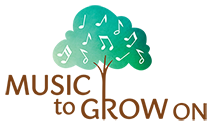Free Career-Themed Music Therapy Session Plan for Telehealth!
5 Intervention Ideas for Teens and Adults
We know it can be hard to come up with fresh ideas and materials during what feels like week 1,000 of telehealth and distance learning.
Previously on the MTGO blog, we’ve shared intervention ideas for Making Music with Your Little Ones. Today, we’re going to share five intervention ideas for a career-themed music therapy session!
In this Google Drive folder, you can find editable and PDF copies of this session plan, as well as a screen-sharable Google Slides presentation with visuals, lyrics, and discussion prompts – all free and ready for you to use with your clients TODAY!
Here’s an overview of the session plan:
-
Lower-body workout with “Workin’ For a Livin” by Huey Lewis and The News
-
Oral motor and articulation exercises with “Day-O” by Harry Belafonte
-
Selective attention exercises with “9 to 5” by Dolly Parton
-
Upper-body workout with “Sixteen Tons” by Tennessee Ernie Ford
-
Songwriting with “I’ve Been Working on the Railroad”
“Workin’ for a Livin’” Workout
Goal Areas: increase or maintain muscular strength and flexibility, range of motion, circulation to extremities, and heart health
Procedure:
- Focus the camera on your feet and demonstrate tapping one foot at a time while keeping heels on the ground (plantar and dorsiflexion).
- Add metronome and accompaniment as needed to assist.
- Play and sing the first verse and chorus of “Workin’ for a Livin’” by Huey Lewis and the News. Continue to demonstrate the movement for your group to follow.
- Repeat with marching (hip flexion), kicks (knee extensions), etc.
Adaptations:
- for a gentler workout, prompt clients to move during the chorus and rest during the verses
- for a more intense workout, ask clients to perform the exercises while standing
“Day-O” Oral Motor and Articulation Exercises
Goal Areas: increase or maintain speech intelligibility
Procedure:
- Screen share the “Job Board” (slide 4).
- Tell your group that their challenge is to match songs about working to jobs on the job board. The four jobs are farmer, construction worker, office employee, and miner.
- Sing and play the chorus and/or first verse of “Day-O” by Harry Belafonte.
- Ask your group to match “Day-O” to one of the jobs on the job board (the answer is farmer/harvester).
- Share lyrics (slides 5-8) with your group. Sing and/or play “Day-O” once through.
- End screen share and explain to your group that you’re going to change the lyrics in order to exercise all the different muscles we use to speak and sing.
- Demonstrate the new lyrics, then invite your group to sing along and/or fill in the end of each phrase. Suggested lyrics: ma (loosen jaw), wow (lip rounding), la (tongue coordination), etc.
- Tell your group that you’re going to sing the chorus one more time now that their voices are all warmed up. Screen share lyrics for the chorus (slide 10).
- Lead the group in singing the chorus one more time, then return to the Job Board (slide 4).
“Nine to Five” Selective Attention Exercise
Goal Areas: maintain or increase selective attention (filtering out irrelevant stimuli in order to complete a task)
Procedure:
- Screen share the “Job Board” (slide 4).
- Tell your group that their challenge is to match songs about working to jobs on the job board.
- Play and sing the first verse and chorus of “Nine to Five” by Dolly Parton
- Ask your group to match “Nine to Five” to one of the jobs on the job board (the answer is office employee).
- Explain to your group that you’re going to practice filtering out what’s not important in order to complete a challenge. The challenge is to raise a hand (or instrument!) each time they hear the words “nine to five” in the song.
- Screen share the lyrics (slides 11-18). Play and sing the whole song with your group. Invite them to sing along and/or play instruments with you if it doesn’t distract them from the task!
- Return to “Job Board” (slide 4).
“Sixteen Tons” Arms, Chest, and Shoulder Workout
Goal Areas: increase or maintain muscular strength and flexibility, range of motion, circulation to extremeties, and heart health
Procedure:
- Screen share the “Job Board” (slide 4).
- Tell your group that their challenge is to match songs about working to jobs on the job board.
- Play and sing the first verse and chorus of “Sixteen Tons” by Tennessee Ernie Ford.
- Ask your group to match “Sixteen Tons” to one of the jobs on the job board (the answer is miner).
- Optional: tell your group that you won’t make them haul sixteen tons of coal, but they can work out their arms to this song!
- Screen share visual models of each exercise (slides 19-22) so you can accompany instead of modeling. If necessary, you can stop the screen share to demonstrate.
- Verse 1 and chorus: bicep curls with both arms
- Verse 2 and chorus: chest press with both arms
- Verse 3 and chorus: shoulder press with both arms
- Verse 4 and chorus: tricep extensions with both arms
- Congratulate your group for completing an arm workout!
- Return to “Job Board” (slide 4).
“I’ve Been Working on the Railroad” Songwriting
Goal Areas: increase group cohesion, participation and interaction, and self-expression
Procedure:
- Screen share the “Job Board” (slide 4).
- Tell your group that their challenge is to match songs about working to jobs on the job board.
- Play and sing the beginning of “I’ve Been Working on the Railroad.” If you’d like to make this more challenging, hum the melody on a kazoo!
- Ask your group to match “I’ve Been Working on the Railroad” to one of the jobs on the job board (the answer is construction worker).
- Screen share the lyrics (slides 24-25). Play and sing through the whole song once with your group.
- Tell your group that you’re all going to create a new version of the song by changing the words. Screen share the fill-in-the-blank songwriting template (slides 26-27).
- Ask each participant about a job they’ve done (paid or not), what they saw or heard during the job, and something their boss told them. Here’s an example:
Sam’s been working at Safeway
All the livelong day
Sam’s been working at Safeway
Just to pass the time away
Can’t you see people shopping
Rise up so early in the morn
Can’t you hear the boss saying,
“Sam, you did a great job!”
8. Use annotation in your online platform to fill in the blanks on the slides 28-29. If you’d like, save the screen before clearing the annotations to write the next verse. Alternatively, make a copy of the presentation and type directly into the slides.
9. Lead your group in singing your new song!
We hope this post gave you at least one fresh idea for your sessions this week!
What interventions do you use with adults with IDD? Please let us know in the comments below.






Leave A Comment